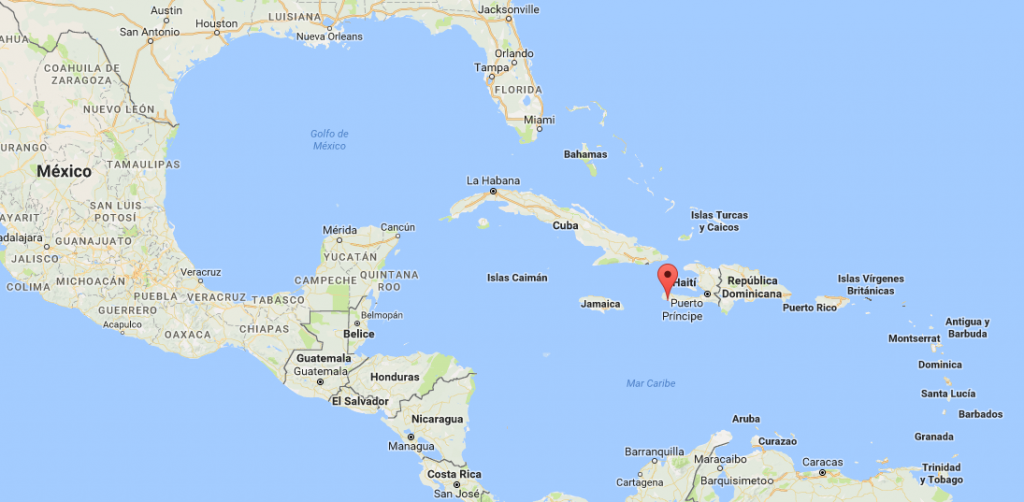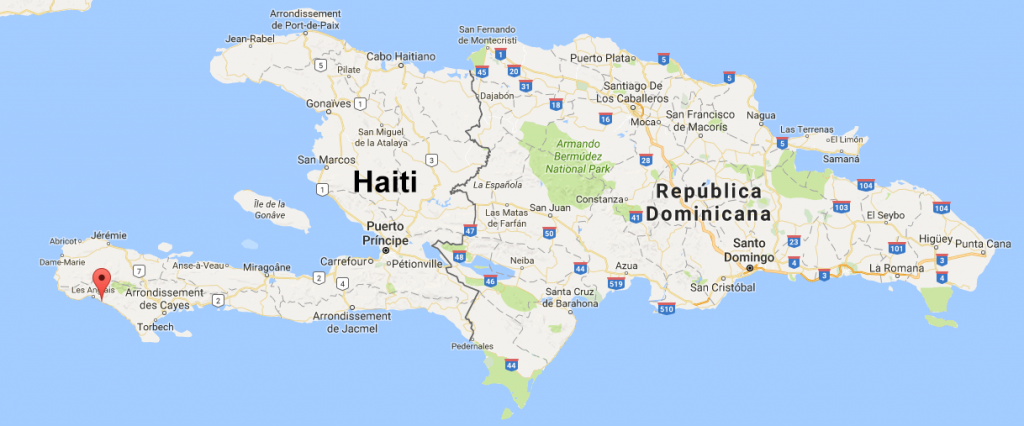Helping Home: Haiti After Hurricane Matthew
On Oct. 4, 2016, eight Haitian students at EARTH, of different ages and hailing from various regions of the country, watched the situation in horror, refreshing their social media feeds to learn the latest about the storm and its vast wreckage.
They were following the havoc of Matthew, the first Atlantic hurricane to reach Category 5 status in nearly a decade. The storm would end up thrashing its way across northern South America and the Dominican Republic before unleashing the brunt of its force on Haiti – destroying schools, medical clinics, farms and much else that lay in its path. All told, the small, Creole nation lost more than 800 lives and nearly all its vegetation in the affected areas.
The EARTH classmates knew they couldn’t just withdraw into their idyllic campus lives in Costa Rica and ignore the devastation, but didn’t know exactly how to help.
“We wanted to do something different, something long-lasting, something more than just feeding the people,” said Marc Présumé (’18, Haiti), one of the students involved with the planning process. “Haiti is a very vulnerable country, especially to the negative effects of climate change. We wanted our help to aid the Haitian people in combatting those negative effects.”
They zeroed in on Chardonnières, a coastal grape-growing area with a population of around 5,440. It’s also the home of Mariline Hilaire (’19, Haiti), a first-year EARTH student at the time – giving the group a stronger tie to the affected area. To begin, they assessed the support already being waged by larger NGOs – food, water and medical supplies. Seeing as the victims’ immediate needs were being met, the eight EARTH students wanted their efforts to serve as an investment in the communities’ future.
“Many people in this area die from natural disasters because they don’t know how to protect themselves,” Marc said. “There’s a real scarcity of information, of education.”
They jotted down ideas on whiteboards and notebooks, brainstorming ways to innovate against this concern for young Haitian students and adults alike. They met with alternative and integrative methods farmers, agroforestry experts, and various professors to develop a plan for restoring the coastal agricultural areas and teaching valuable, possibly life-saving, skills.
The group ended up designing two series of workshops, one for students and another for agricultural adults, about natural resource use and protection, proper waste management, the importance of resilient agriculture, and natural disaster preparedness – key themes for the community’s restoration and further development.

Photographed in April 2017, these are five of the eight students involved in the effort: (from left) Gina Georges (’18, Haiti), Junior Celestin (’19, Haiti), Mariline Hilaire (’19, Haiti), Marc Presumé (’18, Haiti) and Rachel Brody (’17, Haiti). Not pictured: Fridelyn Sylfrard (’16, Haiti), Fetchina Gereus (’18, Haiti), Senska Jean (’16, Haiti)
Soon after, they enlisted the help of the Office of Student Affairs, to assist in exploring different ways to raise capital for their cause. They used the skills learned in their food science courses to manufacture and sell liquid chocolate, made from donated organic cacao, to the University cafeteria, along with contacting the Haitian embassy in Costa Rica for financial assistance. In total, the group raised more than $2,300 for the mission. Furthermore, they received the blessing of local Haitian leaders in Chardonnières. Mariline had reached out to them to gain much-needed community buy-in for the group’s plan.
Upon arriving to Haiti in early December 2016, they ran errands in various hardware and grocery stores in Port-au-Prince – exchanging the raised funds for quality machetes and other imperative gardening tools and supplies many farmers either didn’t have or lost in the storm. Then they boarded a public bus to Chardonnières.
They were overwhelmed by the destruction, recalling how they could hardly move around. Home after home was devastated; tree after tree lay across the flooded streets.
They spent the next three days working alongside farmers and community members who’d lost nearly everything in the hurricane.
On day one, they held two of their planned talks for more than 200 students. The group supplied each attendee with snacks, along with a pen, a pencil and two notebooks – to help them resume their interrupted educations.
On day two, they held another one of their talks for 92 small farmers in the area. In addition to the lessons, each attendee received a machete, a hoe and plantain seeds to help them return to work.
On day three, the group of EARTH students collaborated with Notre Dame d’Haiti University to construct and manage a much-needed, community-centered agroforestry nursery on the Haitian university’s campus. Located in the Sud Department’s capital city about 72 kilometers (around 45 miles) from Chardonnières, the nursery would be open and accessible to anyone from the southern part of the country to come, take a plant, and thus contribute to the reforestation of an area in need.
The group populated the nursery with 10 resilient food species native to the area of Haiti, apt for the environment, and easy to use by the population. The group hopes this will inspire a growing percentage of the population to recognize the importance of diverse, hearty plants.
Since then, the group has planned for the sites to be visited every three months by an EARTH graduate from Haiti, to ensure the community receives regular support and the agroforestry project continues to stock fresh seed supplies and new plant species.
“What we accomplished wasn’t easy, but we were very motivated,” said Mariline. “We saw the opportunity to develop skills in the community so people can take care of themselves. We hope what we did becomes a model for other vulnerable towns. We hope that, bit-by-bit, our work spreads.”
The group plans to return to Haiti in December. This time, the EARTH students will check in on the progress in Chardonnières and also begin a similar project in another region of the country.
“We want to hold more workshops for teachers and students, and move inward from the coast, assisting zones throughout Haiti,” Marc added.
These EARTH students are committed to providing sustainable support – not popping into a community for only a brief stint, nor only after another natural disaster. They’re digging sturdy roots and modeling the resilience they advocate. They’re ready to weather any future storm with the people of Haiti.
You can help developing societies with a contribution to EARTH University here.






